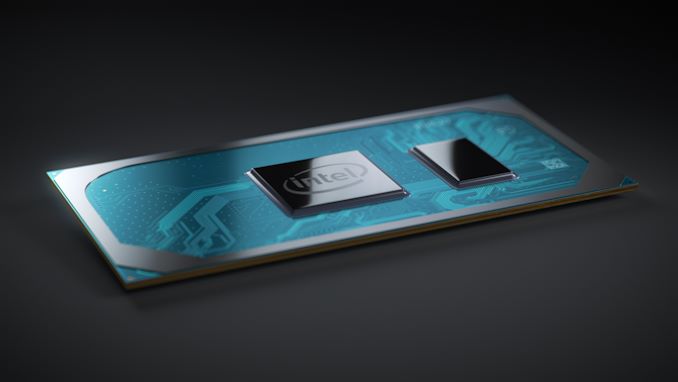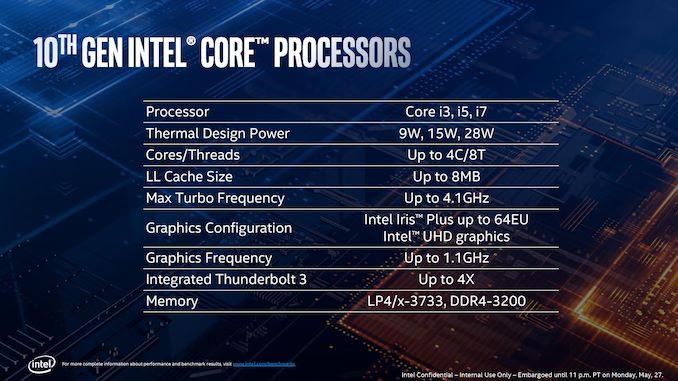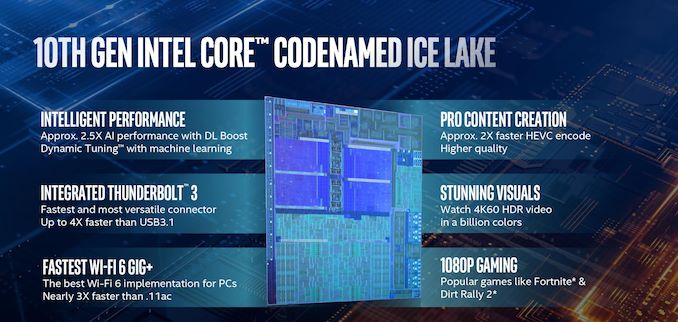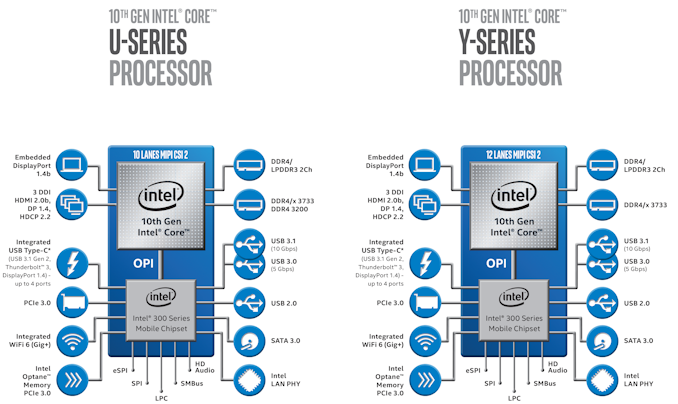Intel Begins Commercial Shipments of 10nm Ice Lake CPUs to OEMs
by Anton Shilov on July 26, 2019 5:30 PM EST
Intel has begun shipments of its 10th generation Core "Ice Lake" processors as of the second quarter, according to the company in an earnings call this week. Made using Intel’s 10nm process technology, these laptop CPUs were qualified by OEMs earlier in 2019 and are on track to reach the market inside mobile PCs by the holiday season.
As reported, Intel began to produce Ice Lake processors in the first quarter in a bid to build up inventory to support a high-volume launch in the second half of the year. The processors passed qualification by PC makers in Q1 – Q2, and then Intel started to ship them for revenue later in the quarter, which was a little bit earlier than anticipated by various market observers. Keeping in mind the lead-time required to get assembled PCs on to store shelves, Ice Lake-powered PCs are well on track to hit the market in Q4 with some machines possibly reaching retailers earlier than that.
Bob Swan, CEO of Intel, stated the following:
- “We began shipping Ice Lake client [CPUs] in the second quarter supporting systems on the shelf for the holiday selling season.”
Intel formally introduced its laptop-focused Ice Lake-U and Ice Lake-Y CPUs, which are based on the Sunny Cove microarchitecture, in late May. Officially called ‘Intel 10th Generation Core’ processors, the family includes 11 chips (ranging from Core i3 to Core i7) featuring two or four general-purpose CPU cores as well as various GPU configurations and coming to market with 9W, 15W, and 28W TDP variants.
On the CPU side of things, Intel promises an average 18% raw clock-for-clock performance uplift compared to the Skylake core released in 2016 (which has been used with small tweaks since then) along with VNNI and Cryptographic ISA instructions. On the GPU side of matters, Ice Lake CPUs will integrate Intel’s Gen11 graphics core with up to 64 execution units, with Intel promising significant performance improvements as well. The updated iGPU will also natively support DisplayPort 1.4 and HDMI 2.0b outputs as well as HDCP 2.2 technology.
As is traditional for Intel’s lower-power mobile parts, the new Ice Lake processors will come with on-package chipsets. The new 300-series chipsets for ICL will natively support USB 3.1 Gen 2, Wi-Fi 6 MAC (RF module will be sold separately), PCIe 3.0, and other features.
Overall, Intel’s road to high-volume production of 10nm CPUs has been long and bumpy; but it looks like the company is finally turning a corner in time for their Q4 launch.
Related Reading:
- Intel Unveils 10th Gen Core Ice Lake-U & Ice Lake-Y Mobile CPUs: 10nm Sunny Cove Later This Year
- Intel Starts Qualification of Ice Lake CPUs, Raises 10nm Volume Expectation for 2019
- Intel Teases Ice Lake-U Integrated Graphics Performance
Source: Intel













115 Comments
View All Comments
Rudde - Saturday, July 27, 2019 - link
It would benefit Intel a lot more to port 'willow cove' to 14nm. It is their 2020 architecture and any backports are unlikely to arrive before 2021 (Comet lake in 2020). Intel will have a hard time defending their single core performance advantage in 2020. They will have to make a big advancement in 2021, how they'll do it is speculation at this point.damianrobertjones - Monday, July 29, 2019 - link
I do like the information but, of course, the lack of capitals confuses me?Targon - Monday, July 29, 2019 - link
If you buy a new, "top of the line" product, and it isn't better than the previous generation products, you will be disappointed. TSMC 7nm is a new fab process, and it's better for AMD than the 12nm parts in clock speed, so claiming that the new fab process should be forgiven for not being as good if there is zero benefit to the user is a bit of a joke. Intel has been claiming that 10nm is on track since 2015, and still isn't better than 14nm.SaturnusDK - Friday, July 26, 2019 - link
Base clock is 1.3GHz for the i7.eek2121 - Saturday, July 27, 2019 - link
Eventually they'll get things ramped up. The big issue with node shrinks are increased power leakage, which means lower clocks. They've been on 14nm for many years so they've had time to optimize their designs. Once they get a few more generations underway, you'll see some clock speed improvements. As to the base clocks, I can't remember exactly, but they were much lower. That is mainly due to the fact that these are laptop chips.name99 - Saturday, July 27, 2019 - link
“Once they get a few more generations underway”So they’ll have competitive chips in, I don’t know, 5 yrs from now? (A few more generations...)
Good thing Apple and AMD plan to take a break over the next five years...
(BTW if Apple manages to get just 20% more single-threaded performance out of A13X — which is below there annual trend ever since the A6 — they’ll already match the BEST Intel has to offer that’s not overclocked...)
ikjadoon - Friday, July 26, 2019 - link
Is it too early to complain about the model names? Maybe, but if you want to prime youreslf before Intel sets their silly narrative.To: Intel
From: the rest of us
Subject: what the hell
These laptop SKUs all release in six months:
i7-10710U (Comet Lake)
i7-1065 G7 (Ice Lake)
i7-10510U (Comet Lake)
i5-1035 G1 (Ice Lake)
i5-10210U (Comet Lake)
i3-10110U (Comet Lake)
i3-1005 G1 (Ice Lake)
Somehow, you kept i3-i5-i7 but decided the rest should be a soup of letters. Who are you, HP?
Farfolomew - Friday, July 26, 2019 - link
As much as I tire of the ‘x’ moniker, in this instance it actually makes sense. Why not call them ‘i7-X710’, ‘i5-X510’, ‘i3-X210’ etc0iron - Sunday, July 28, 2019 - link
And after X, XI or 11? Maybe another dash? i7-10-710Duncan Macdonald - Friday, July 26, 2019 - link
So Intel have finally got a 10nm chip - however it is a small chip with a maximum of 4 cores. As Intel do not use the equivalent of the AMD chiplet design, the acid test will be how long it takes Intel to produce a 10nm equivalent of its current high end designs (16-28 cores). I personally do not expect volume deliveries of 10nm high end CPUs from Intel before 2021 (possibly even 2022).(Intel high end 10nm chips may also have thermal problems for Intel to overcome as the chip would end up with about half the surface area but the same power dissipation as current generations - this is not a problem for AMD as the chiplets are physically separated so no single hot spot exists.)